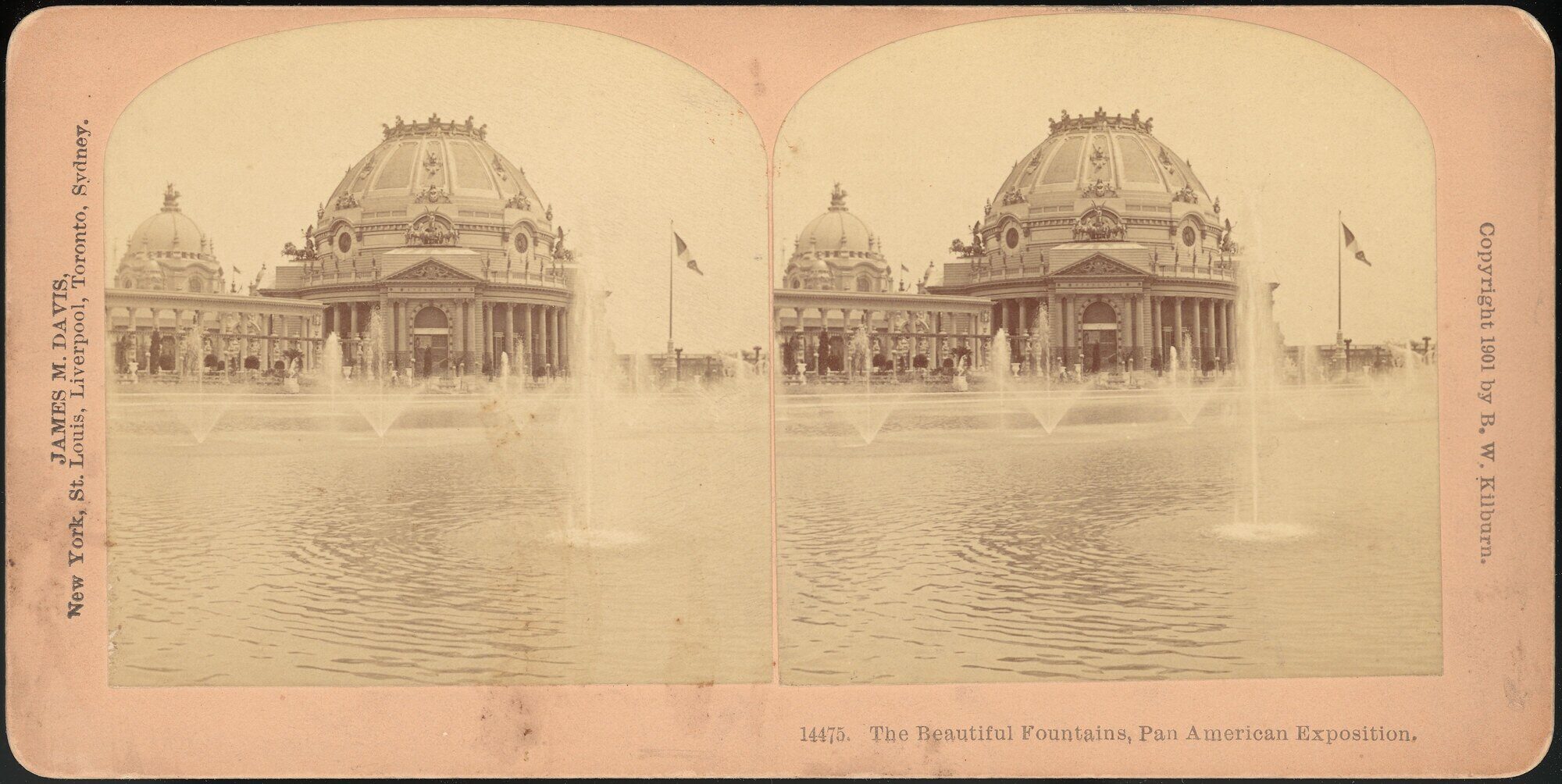The 1901 World's Fair, known as the Pan-American Exposition, was held in Buffalo, N.Y., not far from our laboratory. The Exposition featured extensive exhibits, a midway with rides and shows, and showcased groundbreaking advancements in science and technology — most notably, electricity.
The Rainbow City
A major highlight was electric lighting powered by hydroelectric energy from nearby Niagara Falls. This electricity was transmitted to the fairgrounds, illuminating many of the Exposition buildings, including the prominent Electric Tower, with thousands of light bulbs. The dazzling display of multicolored lights earned the Exposition the nickname "The Rainbow City."
Although hydroelectric power had been generating electricity at Niagara Falls since 1885, it wasn’t until 1895 that it could be harnessed on a large scale and transmitted the 22 miles to Buffalo. This electricity was used to illuminate streets, operate streetcars, and power various innovations at the Exposition.
Buffalo was already at the forefront of electric adoption. As the first city to utilize electric street lights and implement an electric streetcar system, it was nicknamed the "City of Light."
The Electric Tower
The ability to transmit electricity from Niagara Falls to Buffalo was largely credited to Nikola Tesla, who developed the alternating current (AC) system. This breakthrough allowed electricity to travel great distances and be adjusted to different voltage levels. Thanks to Tesla’s innovation, nearly a quarter-million colored 8-watt bulbs illuminated the "Rainbow City."
A central feature of the Exposition was the Electric Tower, standing 410 feet tall and acting as a massive light beacon. In addition to electricity, the Exposition displayed other cutting-edge inventions, such as incubators for infants, X-ray machines, and various industrial machinery.
The Expo Stadium and Midway
Beyond technological marvels, the Exposition provided entertainment in the Expo Stadium, featuring baseball games, mock battles, fireworks displays, and military drills. The midway boasted nearly 300 concessions, including the "Scenic Railway" and attractions like "Trip to the Moon" and "Venice in America."
The 350-acre fairground’s grand design followed a Roman Forum layout. Stretching outward from the Electric Tower, a network of lagoons and canals encircled the exhibit area, connected by ornate bridges and esplanades. The grounds were adorned with statuary, fountains, grand gateways, and thousands of carefully arranged trees and gardens.
Most of the buildings, though magnificent, were temporary structures made of plaster, designed to be dismantled after the fair. The only exception was the New York State Building, which was constructed from marble and still stands today as the Buffalo History Museum.
President McKinley's Assassination
The Exposition took a tragic turn when President William McKinley was assassinated at the Temple of Music on September 6, 1901. He was shot twice by anarchist Leon Czolgosz while greeting attendees.
Although initially surviving surgery, McKinley succumbed to infection and gangrene on September 14. Theodore Roosevelt was sworn in as president in Buffalo shortly after.
Today, visitors can walk the grounds of the Pan-American Exposition, now a residential area filled with upscale homes and mansions. A marker commemorates the site where McKinley was shot, while an old warehouse on the Niagara River still stands as a relic of Tesla’s electrical transmission system.
Buffalo’s Electric Building also pays homage to the Exposition’s iconic Electric Tower design.
Structural Innovation and Testing: Lessons From the Exposition
Gift of Weston J. Naef, in memory of Kathleen W. Naef and Weston J. Naef Sr., 1982
The 1901 Pan-American Exposition was a testament to innovation, particularly in electricity and engineering. However, the temporary nature of its structures raises important considerations for today’s building industry. Unlike the plaster-built Exposition buildings, modern structures must meet stringent safety, durability, and energy efficiency standards.
Structural testing plays a critical role in ensuring that today’s building materials can withstand environmental stressors, seismic activity, and daily wear. Advanced testing methods, including load-bearing analysis, fire resistance evaluation, and impact testing, help engineers develop materials that last.
Just as the Exposition demonstrated the power of electricity and technological progress, modern structural testing drives advancements in construction, ensuring safer, stronger, and more efficient buildings. By understanding how materials perform under stress, we can build structures that stand the test of time — unlike the fleeting beauty of the Rainbow City.
If you’re interested in learning how structural testing ensures the safety and reliability of today’s building materials, contact NGC Testing Services. Our expert team is ready to assist with your testing needs and provide insights into the evolving standards of structural integrity.
This post was originally published on September 3, 2021, by Bob Menchetti and was updated and republished in February 2025.
Search blog articles
Browse by topic
Subscribe for updates
LEARN MORE
Related Blog Articles
GET IN TOUCH
Contact Us
NGC Testing Services features one of North America's most comprehensive and unique fully accredited testing facilities. Contact us today to visit our 50,000-plus-square-foot facility located in Buffalo, New York.

